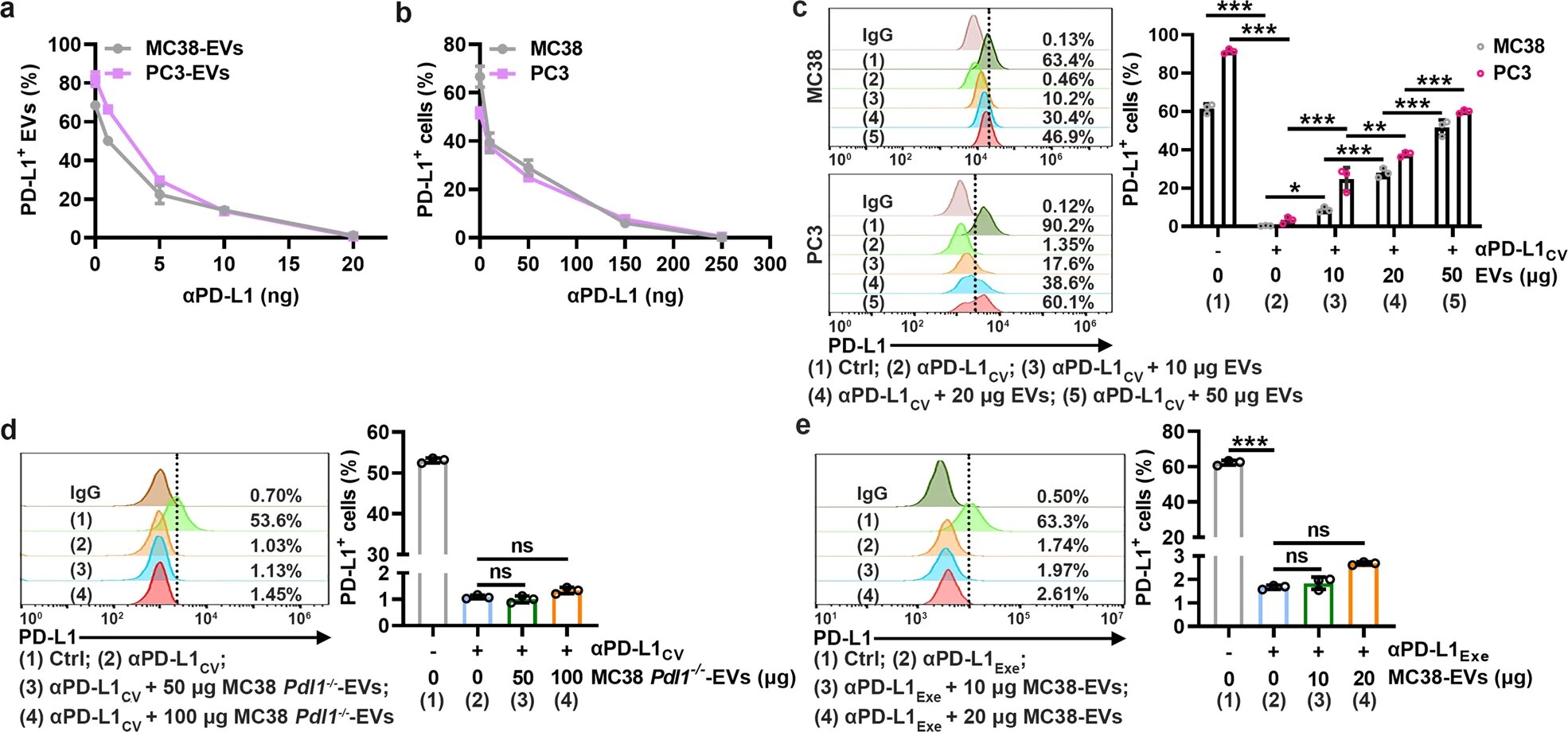#Scientists reveal new TEV-mediated αPD-L1-specific therapy resistance mechanism

Table of Contents
“Scientists reveal new TEV-mediated αPD-L1-specific therapy resistance mechanism”

The immune checkpoint inhibitors, including anti-PD-1 and anti-PD-L1 antibodies (αPD-1 and αPD-L1), have revolutionized tumor immunotherapy. Although αPD-1 and αPD-L1 show excellent efficacy in various tumor types, even in patients with advanced tumors, only 10–30% of patients respond to αPD-1 and αPD-L1 therapy due to primary resistance.
Extracellular vesicles (EVs) are highly involved in the progression of the tumor. PD-L1+ tumor-derived EVs (TEVs) cause systemic immunosuppression and possibly resist the αPD-L1 blockade. However, whether and how PD-L1+ TEVs mediate αPD-L1-therapy resistance remains unknown.
Recently, the research team led by Prof. Cai Zhijian from the Zhejiang University School of Medicine published an article entitled “Tumor extracellular vesicles mediate anti-PD-L1-therapy resistance by decoying anti-PD-L1” in Cellular & Molecular Immunology. The findings reveal a new TEV-mediated αPD-L1-specific therapy resistance mechanism, thus providing promising strategies to improve αPD-L1 efficacy.
In this study, researchers found that TEVs could bind to αPD-L1 and compete with tumor cells through PD-L1 in vitro. Subsequently, the authors visualized αPD-L1 and tumor PD-L1 interactions as a red fluorescent spot detected by a proximity ligation assay (PLA). The PLA spots on tumor tissues were obviously reduced by injection of MC38-EVs but not MC38 Pdl1-/--EVs, while the PLA spots in tumor tissues significantly increased through inhibiting the secretion of endogenous EVs by knocking out Rab27a.
Furthermore, it was found that after binding TEVs, αPD-L1 is more taken up by phagocytes in the liver and spleen, leading to accelerated degradation and decreased tumor delivery of αPD-L1. In addition, they found that depletion of macrophages by Pexidartinib (PLX3397), which markedly reduced the numbers of peripheral monocytes and liver macrophages, eliminated αPD-L1-therapy resistance in TRAMP-C2-bearing mice.
These results demonstrate that targeting macrophages effectively prevents the clearance of TEV-bound αPD-L1, thus improving the utilization efficiency and therapy resistance of αPD-L1.
“In tumor tissue, due to the high-pressure environment, fewer antibodies could infiltrate into the depth of the tumor tissues. At the same time, these antibodies could be quickly captured by a large number of TEVs. Therefore, the consumption of αPD-L1 mediated by TEVs needs to be paid more attention in clinical therapy,” said Prof. Cai.
Macrophages surrounding lymph nodes block the progression of melanoma, other cancers
Jiming Chen et al, Tumor extracellular vesicles mediate anti-PD-L1 therapy resistance by decoying anti-PD-L1, Cellular & Molecular Immunology (2022). DOI: 10.1038/s41423-022-00926-6
Provided by
Zhejiang University
Citation:
Scientists reveal new TEV-mediated αPD-L1-specific therapy resistance mechanism (2022, October 31)
retrieved 31 October 2022
from https://medicalxpress.com/news/2022-10-scientists-reveal-tev-mediated-pd-l1-specific-therapy.html
This document is subject to copyright. Apart from any fair dealing for the purpose of private study or research, no
part may be reproduced without the written permission. The content is provided for information purposes only.
If you liked the article, do not forget to share it with your friends. Follow us on Google News too, click on the star and choose us from your favorites.
For forums sites go to Forum.BuradaBiliyorum.Com
If you want to read more Like this articles, you can visit our Science category.



